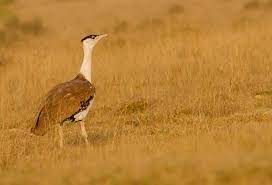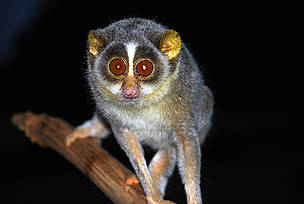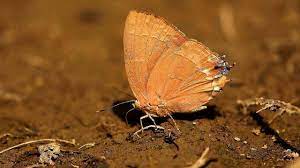The Great Indian Bustard | UPSC | Why In The News ?
Green energy projects threaten the last refuges of the endangered great Indian bustard

About Great Indian Bustard:
- Great Indian bustards are tall birds with long legs and a long neck; the tallest individuals may stand up to 1.2 metres (4 feet) high.
- It is one of the heaviest flying birds (weighing up to 15kgs).
- They inhabit dry grasslands and scrublands on the Indian subcontinent.
- It is endemic to the Indian subcontinent.
- Great Indian bustards are omnivores.
- They prey on various arthropods, worms, small mammals, and small reptiles.
- Both the male and female are roughly the same size, with the largest individuals weighing 15 kg (33 pounds).
- Males and females are distinguished by the colour of their feathers.
Distribution :
It is found in The Following Areas
- Rajasthan (Desert National park)
- Gujarat
- Madhya Pradesh
- Karnataka
- Andhra Pradesh in India and parts of Pakistan.
Conservation Status
- IUCN Red List: It is a Critically Endangered species with less than 150 birds left in the wild.
- CITES: Appendix I
- Wildlife (Protection) Act,1972: Schedule I
What are Firefly bird diverters?
- These are flaps installed on power lines, a reason for many deaths among GIB.
- They work as reflectors for bird species like the GIB.
- Birds can spot them from a distance of about 50 meters and change their path of flight to avoid collision with power lines
Read Also : Species In News
- The Himalayan Brown Bear | UPSC | IUCN Status
- Spotted Angle Butterfly | UPSC | Explained
- The Branded Royal Butterfly | UPSC | Explained
- Ypthima Watsoni Butterfly | UPSC | IUCN Status
- Caracal UPSC | IUCN Status
- Sitana Dharwarensis Fan-Throated Lizards | UPSC
- Genus Rohanixalus New Tree Frog | UPSC | Explained
- Ypthima Watsoni Butterfly | UPSC | IUCN Status
- Wildlife Protection Act 1972 UPSC | Explained
- Rare Yellow Turtle UPSC | Species In news
Source : The Hindu








